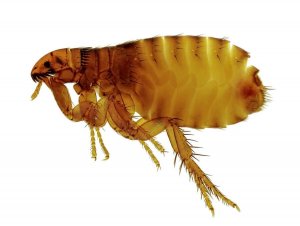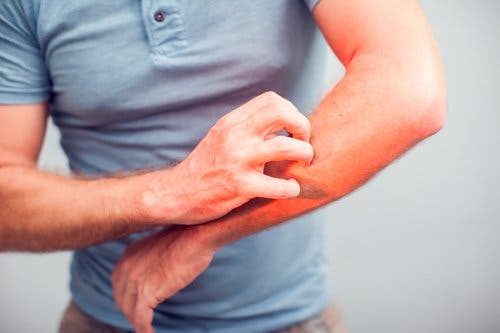Treatment and Symptoms of Tungiasis

Tungiasis is a parasitic disease closely related to poverty. It’s caused by hematophagous fleas, that is, fleas that feed off of blood – specifically, by the species Tunga penetrans. However, there have also been cases related to Tunga trimamillata. In this article, we’ll look at the symptoms of tungiasis.
This flea has many names like chigoe flea, sand flea, nigua, chigger flea, etc. The first reports of tungiasis appeared in 1525, when the Spanish conquistador Fernando González de Oviedo observed that many Haitian natives suffered from this condition.
The parasite originated in America and from there it has spread to other areas of the world. Currently, this flea is found in Latin America, the Caribbean, Sub-Saharan Africa, Madagascar, Zanzibar, Seychelles Islands, the west coast of India, Pakistan, and Oceania. Do you know how to recognize the symptoms of tungiasis? Keep reading to find out!
What is tungiasis?
Tungiasis happens when one of the mentioned species of fleas penetrates the skin of a warm-blooded animal. The disease develops when the female of the species, in a pregnant state, penetrates the skin. When this happens, it goes through a process of hypertrophy and produces thousands of eggs that it then expels.
The disease can affect any area of the body, but it most commonly affects the feet. This is because the flea prefers to live in dry, shaded, sandy ground that’s full of organic material. If you add to this mixture people walking barefoot, it makes infection possible.
The pregnant female attaches herself to the skin with her mouth. She goes through the epidermis, until she can feed off the capillaries of the papillary dermis. The anal-genital opening of the parasite reaches to the surface of the skin. Through that opening the flea expels the eggs to the exterior and, after 1 to 3 weeks, the female dies.
Discover: How to Get Rid of Fleas with Diatomaceous Earth
Symptoms of tungiasis

In most cases, tungiasis affects the soles of the feet, periungual regions, and the skin between your fingers and toes. It’s estimated that only between 5% and 10% of the cases show symptoms of tungiasis in other areas of the body.
You normally experience intense itching in the affected area. You can have one or many lesions. They can also be painful or asymptomatic. In the 24 hours after the parasite penetrates the skin, you can observe an erythematous papule or macula. Generally, this starts to appear about two hours after contact.
The lesion evolves and turns into some white nodules that have a black spot in the center. The black spot is the end of the abdomen of the flea. Many times, near the spot you can observe an accumulation of eggs stuck to the skin.
Once the flea dies, a black scab covers the lesion. This is made of coagulated blood and debris. Then an epidermal scar appears. Sometimes, the lesions are similar to a blister, with an ulcerous or warty appearance.
Treatment
The basic treatment for tungiasis consists of surgically removing the flea. To do this, they use a sterile needle and then wash it with a saline solution afterwards. In some cases, they use a deep shave method. Then they scrape the skin with electrocoagulation.
It’s very important to extract the parasite very carefully. If the body of the flea breaks during the process, it will cause a severe inflammatory condition. After extraction, you should apply topical antibiotics.
In some cases, they use thiabendazole to treat tungiasis. This is an oral medicine you have to take in doses of 25 mg/kg per day, for 5 to 10 days. You can use the same medicine, as a cream and lotion, to reduce the number of lesions.
You might be interested in: How to Treat Intestinal Parasites
Prevention

The best way to avoid the symptoms of tungiasis is to prevent it from happening. To do this, the most practical method is to wear closed footwear and avoid laying down or sitting in areas where the fleas could live.
The best strategy, in any case, is to fight against poverty, pave roads and pathways, and establish effective garbage collection systems. Likewise, efforts should be made to improve houses, which shouldn’t have dirt floors.
Additionally, education plays an important role. It’s important to train people that are exposed to this parasite to recognize it and prevent it from penetrating the skin.
All cited sources were thoroughly reviewed by our team to ensure their quality, reliability, currency, and validity. The bibliography of this article was considered reliable and of academic or scientific accuracy.
- Hoon, K. S., Fernández, M. F., Buján, M. M., Cervini, A. B., Laffargue, J., & Pierini, A. M. (2011). Tungiasis: Presentación de un caso clínico. Archivos argentinos de pediatría, 109(4), e82-e84.
This text is provided for informational purposes only and does not replace consultation with a professional. If in doubt, consult your specialist.








